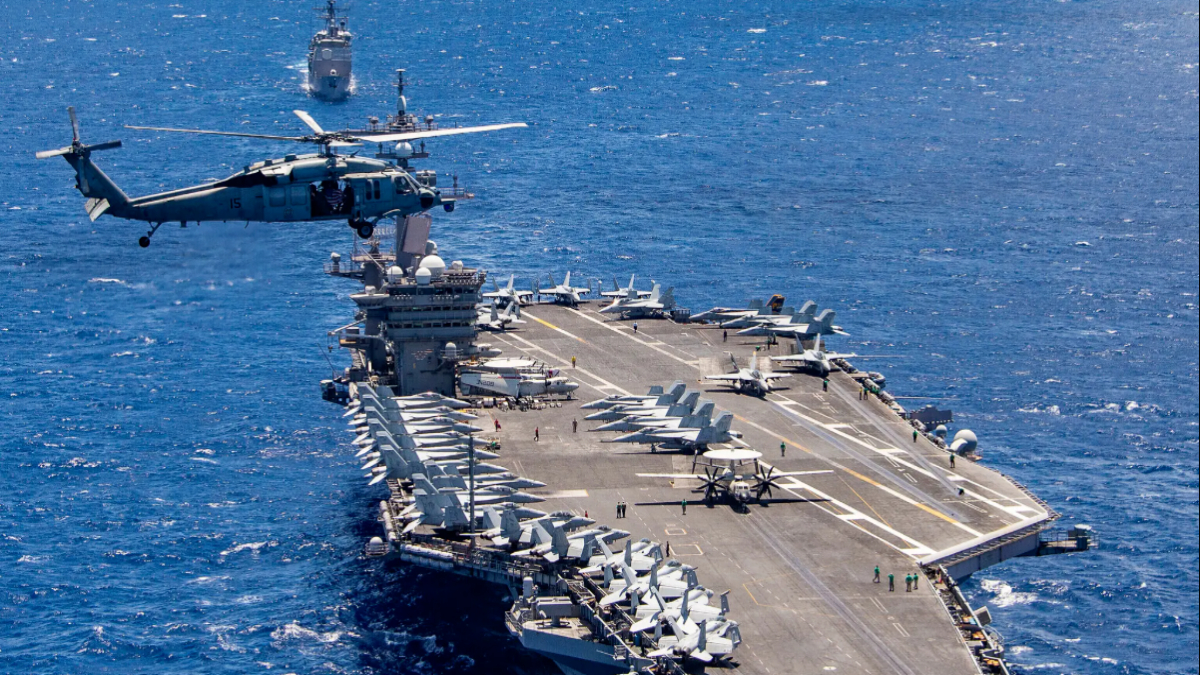Now Reading: Dual US Navy Aircraft Crash in South China Sea
-
01
Dual US Navy Aircraft Crash in South China Sea
Dual US Navy Aircraft Crash in South China Sea

The simultaneous, though separate, crashes of a US Navy MH-60R Sea Hawk helicopter and an F/A-18F Super Hornet fighter jet from the aircraft carrier USS Nimitz in the South China Sea have drawn international attention, but they do not appear to represent an immediate or potent flashpoint for global conflict. While the location is a heavily disputed and strategically volatile area, early assessments and official US Navy statements suggest the incidents are likely technical or operational mishaps rather than a result of adversarial action.
The Incidents and Official Response
On Sunday, October 26, 2025, two US Navy aircraft went down in the waters of the South China Sea within approximately 30 minutes of each other while conducting “routine operations” from the USS Nimitz. The first was an MH-60R Sea Hawk helicopter, and the second, an F/A-18F Super Hornet fighter jet.
Crucially, the US Navy’s Pacific Fleet confirmed that:
- All five personnel involved (three from the helicopter, two from the jet) were safely rescued and are in stable condition. The Super Hornet crew successfully ejected.
- The cause of both incidents is currently under investigation.
- The Navy has stated that the crashes were unrelated and took place during normal operations.
The safe recovery of all crew members and the Navy’s immediate launch of an internal investigation point towards treating this as a serious but standard military aviation accident rather than an event with geopolitical triggers.
Geographic Tension vs. Military Mishap
The primary reason for elevated geopolitical scrutiny is the location: the South China Sea. This vital international waterway is the subject of competing territorial claims by China, Vietnam, the Philippines, Malaysia, Brunei, and Taiwan. China’s expansive claims, militarization of islands, and frequent challenges to international navigation operations by the US and its allies keep tensions consistently high. US Navy operations, such as those conducted by the USS Nimitz Carrier Strike Group, are explicitly part of a broader strategy to assert freedom of navigation and counter Beijing’s maritime expansion.
However, the history of naval aviation shows that such accidents, while tragic in terms of lost assets (an F/A-18 jet alone costs over $60 million), are not unprecedented during complex carrier operations.
- The USS Nimitz itself is on its final deployment before decommissioning, which raises potential concerns about the age of the carrier and its associated operational tempo.
- Similar, though separate, incidents have occurred recently on other US carriers, such as the USS Harry S. Truman, including jets sliding off decks and being mistakenly shot down by a US warship. This history underscores that operational errors or mechanical failures are unfortunately common risks in high-stress, complex naval environments.
Geopolitical Context: Managing Risk
The crashes occurred as US President Donald Trump was on a diplomatic tour in Asia, with a planned meeting with Chinese leader Xi Jinping for trade talks. The coincidence of the accidents with this high-level diplomacy could be seen as adding a layer of sensitivity, yet the immediate US Navy framing of the crashes as “routine operations” and an internal matter serves to de-escalate any perception of foreign interference.
For a military incident to become a flashpoint for global conflict, there typically needs to be an element of perceived hostile action by another major power, an unrecovered crew member leading to an escalation of search operations near disputed territory, or a direct military confrontation during the incident. Given the current information, none of these key escalatory factors are present.
The greater long-term risk this incident highlights is not a move toward immediate conflict, but the potential for unintentional escalation in a heavily militarized and contested region. The frequent presence of both US and Chinese naval assets in close proximity in the South China Sea means any future, more ambiguous accident or technical failure could be dangerously misinterpreted, potentially leading to a crisis if communication channels fail.
In conclusion, while the dual crashes of high-value US military aircraft in the South China Sea are a significant loss of materiel and a major security concern for the US Navy, they are highly unlikely to be the trigger for a global conflict. The priority for the US military is now a thorough investigation to identify the root cause of the separate mishaps and to mitigate future risks in this volatile operational environment.









